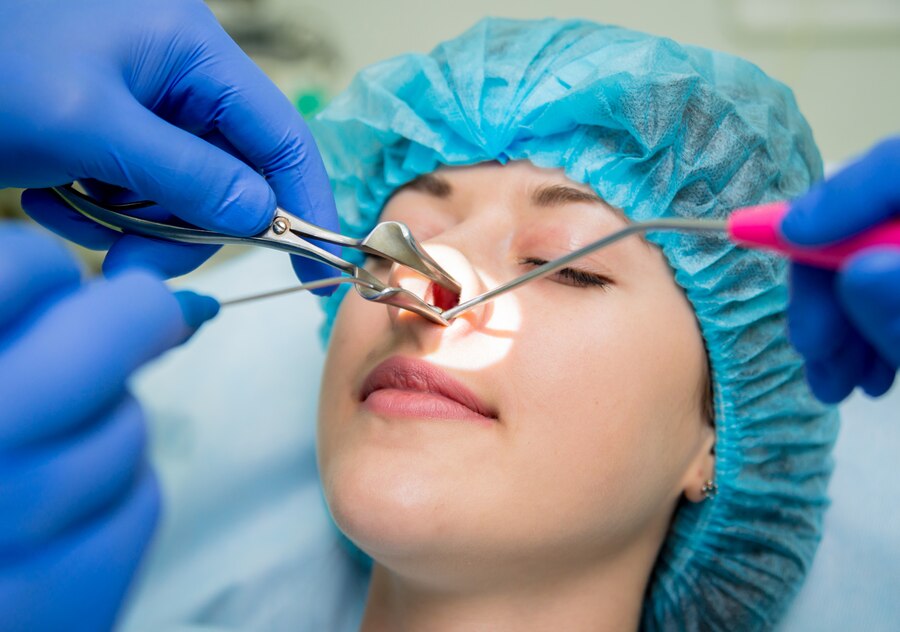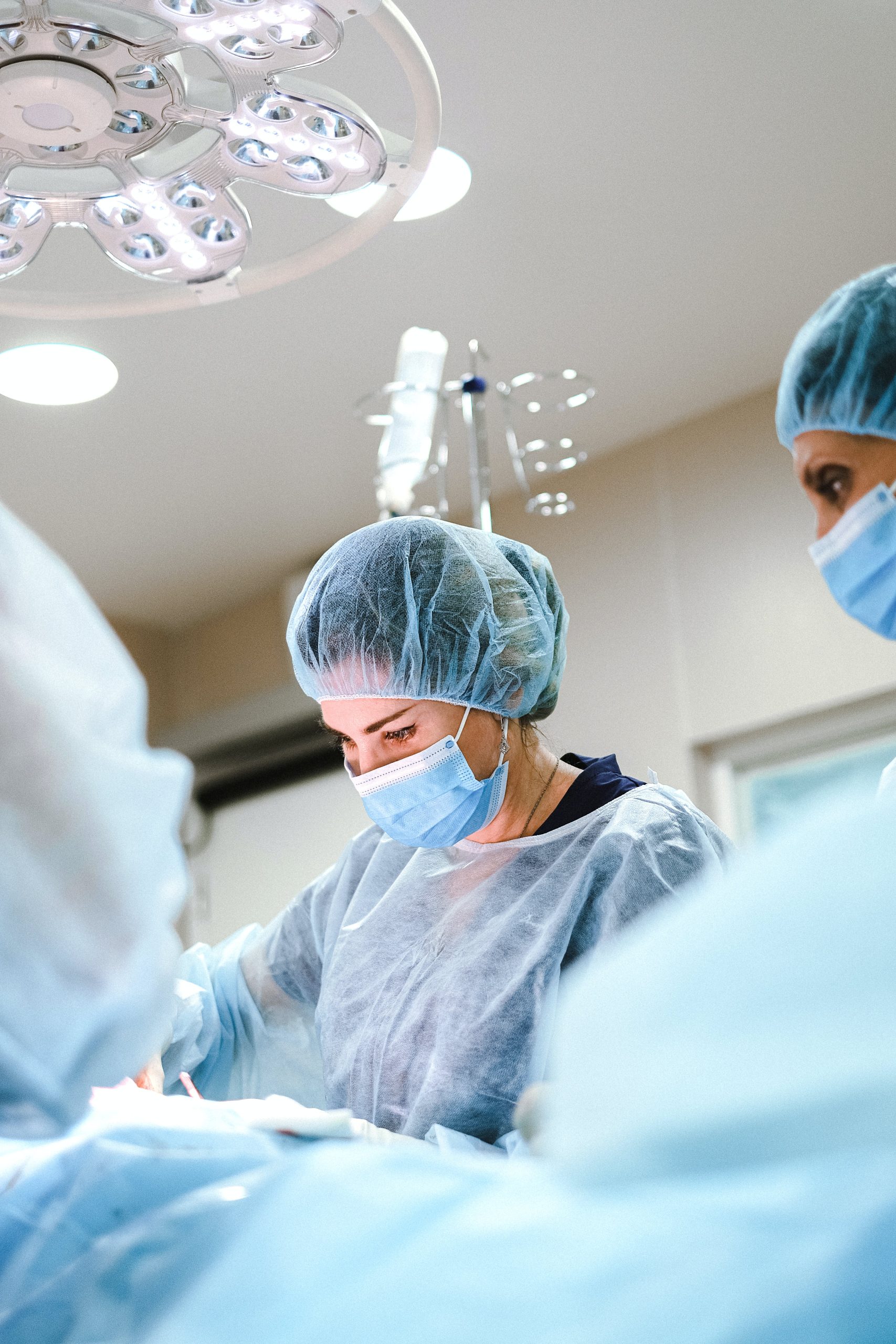Turbinate Hypertrophy
1. What is the condition about?

2. What are the causes?

- Allergies: Allergic reactions to pollen, dust mites, pet dander, or other allergens can lead to chronic inflammation and swelling of the turbinates.
- Chronic Rhinitis: Conditions like chronic rhinitis, which may be triggered by irritants or infections, can also result in turbinate enlargement.
- Structural Abnormalities: In some cases, individuals may have naturally larger turbinates or structural abnormalities that predispose them to hypertrophy.
- Environmental Factors: Environmental factors such as exposure to dry air, pollution, or irritants can contribute to chronic nasal congestion and turbinate hypertrophy.
3. How common is the condition?
Turbinate hypertrophy is a relatively common condition and can affect people of all ages. Its prevalence may vary depending on geographical location, environmental factors, and individual susceptibility.
4. What can an ENT Specialist do for you?
Consulting with an Ear, Nose, and Throat (ENT) specialist is essential for individuals struggling with turbinate hypertrophy. An ENT specialist can provide a comprehensive evaluation and offer various treatment options tailored to your specific condition.
The Role of an ENT Specialist:
ENT specialists can diagnose the extent of turbinate hypertrophy through physical examination, endoscopy, and imaging tests like CT scans.
Depending on the severity and underlying causes, ENT specialists can recommend a range of treatments, including medications, lifestyle modifications, and surgical interventions.
They provide ongoing care to monitor your condition, make necessary adjustments to your treatment plan, and ensure that you achieve lasting relief.
5. How can the condition be treated?
The treatment of turbinate hypertrophy aims to reduce nasal congestion, improve breathing, and alleviate associated symptoms. The choice of treatment depends on the severity and underlying causes of the condition.
Treatment Options for Turbinate Hypertrophy:

Medications
Antihistamines, decongestants, and nasal corticosteroids can help reduce swelling and alleviate symptoms.

Allergen Avoidance
Identifying and avoiding allergens that trigger nasal congestion is crucial for long-term management.

Nasal Irrigation
Saline nasal rinses can help maintain clear nasal passages and reduce congestion.

Lifestyle Modifications
Implementing changes like using a humidifier, avoiding irritants, and practicing good nasal hygiene can provide relief.
6. Guidelines for Surgery
In cases where conservative treatments have been ineffective or when structural issues contribute significantly to turbinate hypertrophy, surgical intervention may be considered.
When Surgery May Be Considered:
- Turbinate Reduction: Turbinate reduction surgery, also known as turbinate coblation or turbinate submucous resection, is a procedure in which the size of the swollen turbinates is reduced to improve nasal airflow. It is typically recommended when medications and other treatments do not provide sufficient relief.
7. Evaluation & Follow Up for Treatment
Following turbinate reduction surgery or other treatment modalities, thorough evaluation and follow-up care are essential for a successful recovery and optimal results.
Post-treatment Care
- Medication Adherence: If prescribed medications, continue taking them as directed by your healthcare provider.
- Allergen Avoidance: Follow allergen avoidance strategies recommended by your specialist to minimize the risk of recurrence.
- Nasal Irrigation: Continue saline nasal rinses as advised to maintain clear nasal passages.
- Lifestyle Modifications:Implement recommended lifestyle changes to support long-term nasal health.
Long-term Management:
- Regular Check-ups: Attend scheduled follow-up appointments with your ENT specialist to monitor your progress, evaluate the effectiveness of the treatment, and make any necessary adjustments to your care plan.
8. Risks of Surgery
When turbinate reduction surgery is considered, it’s important to be aware of potential risks and complications associated with the procedure.
Possible Risks and Complications:
- Bleeding: Some bleeding is common during and after surgery but is typically temporary and manageable.
- Infection: Infections are rare but possible; prompt treatment is essential to prevent complications.
- Changes in Sensation: Some individuals may experience temporary changes in sensation, such as numbness or altered sense of smell, which typically improve over time.
- Recurrence: Turbinate hypertrophy may recur in some cases, especially if allergen exposure continues or other underlying factors are not addressed.
Discuss any concerns or questions regarding potential risks with your ENT specialist before undergoing surgery.
9. Alternatives to Surgery
Surgical intervention for turbinate hypertrophy is typically considered when other treatments have been ineffective. However, alternative treatment options for turbinate hypertrophy include:
Alternative Treatment Options:
- Medications: Over-the-counter and prescription medications can effectively manage symptoms and reduce swelling.
- Allergen Avoidance: Identifying and avoiding allergens in your environment can significantly alleviate symptoms.
- Lifestyle Modifications: Lifestyle changes, such as using a humidifier, maintaining good nasal hygiene, and avoiding irritants like smoke and strong odors, can provide relief and support long-term nasal health.
It’s essential to work closely with your ENT specialist to determine the most appropriate treatment approach based on the severity of your condition, its underlying causes, and your individual needs.

